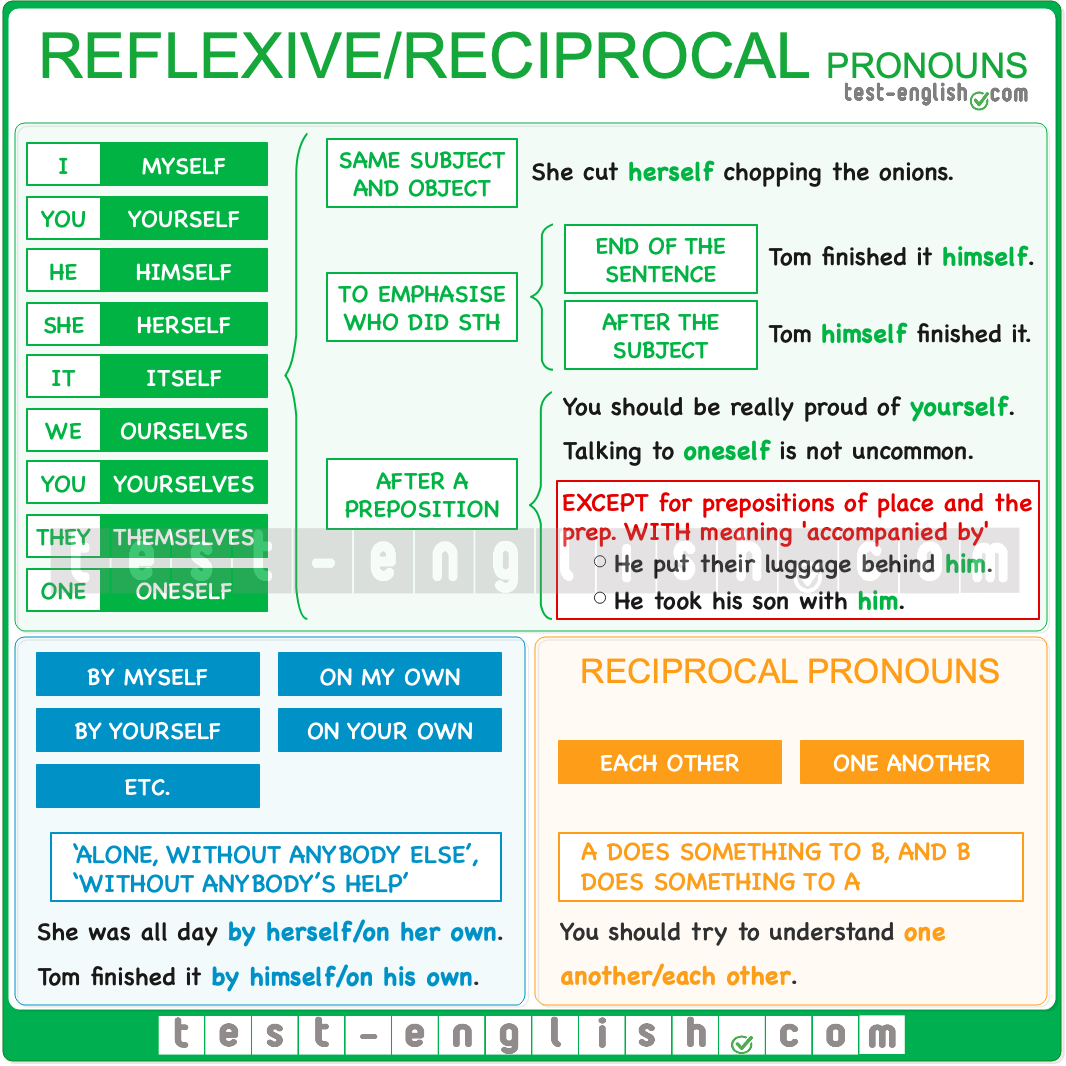Reflexive pronouns play an important role in English grammar. They are used when the subject and object of a sentence refer to the same person or thing. Understanding how to use reflexive pronouns correctly can help improve your writing and communication skills.
Reflexive pronouns are formed by adding “-self” or “-selves” to personal pronouns. They are used to reflect the action of the verb back onto the subject. For example, “He washed himself,” where “himself” is the reflexive pronoun.
Reflexive Pronoun Chart
Here is a chart of reflexive pronouns in English:
| Subject | Reflexive Pronoun |
|---|---|
| I | myself |
| You | yourself |
| He | himself |
| She | herself |
| It | itself |
| We | ourselves |
| They | themselves |
Reflexive pronouns can also be used to emphasize the subject in a sentence. For example, “I myself saw the accident,” where “myself” adds emphasis to the fact that the speaker personally witnessed the accident.
It is important to note that reflexive pronouns are only used when the subject and object of the sentence are the same. Using reflexive pronouns incorrectly can lead to grammatical errors and confusion in communication.
Practice using reflexive pronouns in your writing and speech to become more comfortable with their usage. With time and practice, you will be able to incorporate reflexive pronouns seamlessly into your language skills.
Closing Thoughts
Understanding reflexive pronouns is essential for effective communication in English. By using the reflexive pronoun chart as a guide, you can improve your grammar skills and enhance your writing abilities. Remember to always use reflexive pronouns when the subject and object are the same, and practice incorporating them into your daily language usage.
